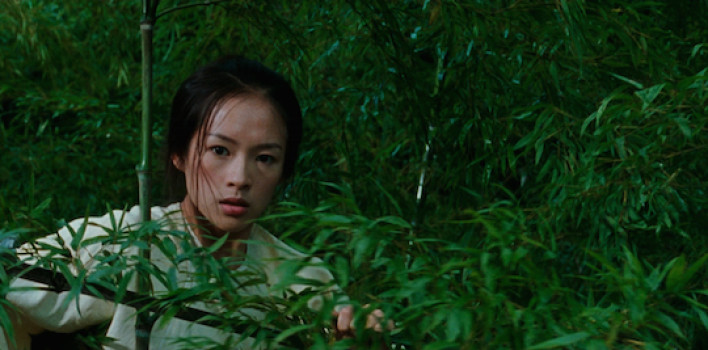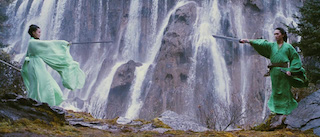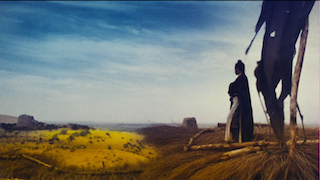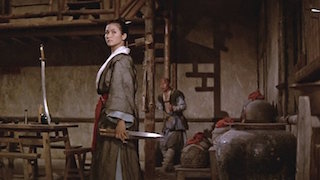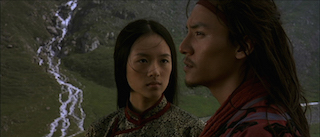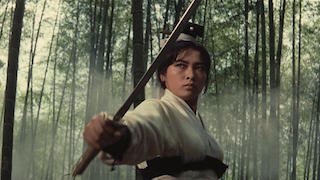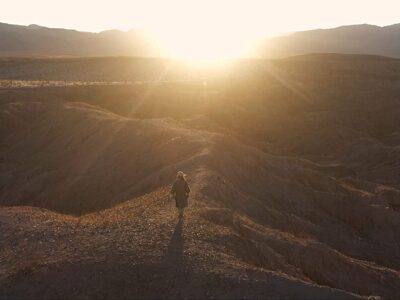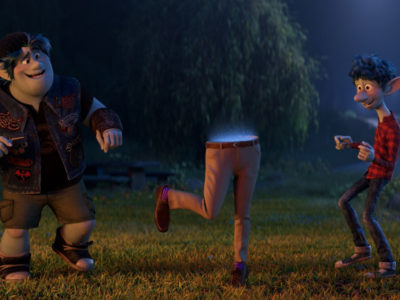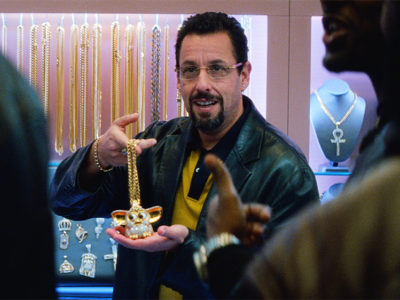Top 5 Wuxia Films
The Chinese movie genre “wuxia”, meaning “martial or chivalrous hero”, has been getting a lot of attention as of late. I recently reviewed the 2015 festival film darling The Assassin, the famous Taiwanese director Hsiao-Hsien Hou’s fabulous take on the genre. And now, only a few weeks later, Netflix’s highly anticipated sequel to one of the most commercially successful wuxia films of all time, Crouching Tiger, Hidden Dragon, releases on their streaming platform on Friday, February 26th. In anticipation of this movie, it might help you as either a wuxia novice or enthusiast to refamiliarize yourself with the best of the genre, from the more recent and successful movies to the older and extremely influential. All five of these movies are well worth your time and exemplify both the cinematic excitement of the movie genre and the malleability of this historical Chinese narrative.
5) Hero
The narrative genre of wuxia has always mirrored epic poetry and Yimou Zhang’s masterpiece, Hero, is poetry in motion. Every fight scene glides and gently sways around a fairly simple narrative of a victorious hero recounting his victories. It’s been awhile since I have seen this movie, but what I remember from an initial viewing is the incredible battles, both individual duels and army battles, and the effortless excitement of every scene. Combined with Wong Kari-wai’s famous cinematographer Christopher Doyle, the movie explodes with beauty and a distinctiveness unlike any other movie on this list. While the narrative impact is not as great as other, better wuxia films, the fight scenes are well worth it if you love sword-clattering action.
4) Ashes of Time
The filmography of Hong Kong director Wong Kar-wai is quite a hefty list of cinematic gems. One of his most overlooked and least talked about films, however, is his take on the wuxia genre, Ashes of Time. A visceral and vibrant film, Kar-wai takes familiar wuxia elements like a setting on the edge civilization and a hero taking on a group of bandits and blends it with Kar-wai’s oft-used motif of a heart-broken hermit reflecting on his own lost love through the eyes of others. The narrative of this movie is the most elliptical and obfuscating of any Kar-wai film, but like other movies that require multiple viewings to appreciate its story–Fight Club, Memento–it grows in both profundity and emotional depth. An initial viewing can be slightly bewildering as the sands whirl and the camera does likewise through every fight scene. When there is any action on-screen, your eyes will grow tired trying to keep up with its frenetic pace and inventive direction. While clearly not a normal martial arts movie, it is, by far, the most emotional and reflective of the movies on this list.
3) Come Drink With Me
King Hu’s landmark drama released around the same time as another influential wuxia film, The One-Armed Swordsman, and both reshaped how Chinese martial arts films were made. While Hu’s film had less of a cultural impact than The One-Armed Swordsman, it is the better movie and likely more progressive film. Not only was the fight choreography in this film superior and a lot more fun, but it was done while re-introducing the common wuxia hero, the female knight. The star of the movie is Crouching Tiger, Hidden Dragon‘s villain, the Jade Fox herself, Pei-Pei Cheng. She is Golden Swallow, a government official and elite swordsman tasked with rescuing the King’s son from bandits who are holding him ransom in order to barter the return of their leader. The cast of characters in the movie is outstanding and just as fun and cool today as they would be today. Like Hu’s later movie, A Touch of Zen, this movie has multiple false endings as it meditates on justice, violence, and the Buddhist ideology of escaping from worldly matters to break the cycle of violence, only to re-enter it with a brutal, yet ultimately hopeful, final ending.
2) Crouching Tiger, Hidden Dragon
Ang Lee’s artful and exciting film set in Qing dynasty China boasts romance, family, and honor dynamics that make this tale not only kinetic but charged with electric performances and chemistry. Action sets and sequences are surrounded by a fascinating story of Li Mu Bai (Chow Yun-Fat), a famous warrior, his sword the Green Destiny, and his fellow warrior and love interest Yu Shu Lien (Michelle Yeoh). They are set to put aside their swords and take up their long-delayed romance when they are roped into tracking down Jade Fox (Pei-pei Cheng), the murderer of Li Mu Bai’s master, and her mysterious disciple (Ziyi Zhang).
Few movies made before it boasted the scale and intensity of its fight scenes, and few Americans had seen choreography this fluid and majestic. However, the real key to Lee’s brilliance in this movie, awesome choreography and fight scenes aside, is the emotional depth and empathy you develop for 6 to 7 characters that play a major part in the narrative. Lee sets stakes and character dynamics for when the movie goes Shakespearean. The full emotional weight of the movie hits you and you’re left to ponder lost loves and the character’s final, fateful choices. Masterfully and beautifully done and, by far, my favorite Ang Lee movie. It would garner many Oscar nominations and win four and set the stage for future wuxia films like Hero and House of the Flying Daggers to be commercially successful in the United States. A truly great achievement of cinema and second in wuxia films only to the one Ang Lee has touted as his movie’s major influence.
1) A Touch of Zen
We’ve already tackled King Hu’s first wuxia film, Come Drink With Me, and his epic three-hour masterpiece tops the list because of its stunning imagery, philosophical musings, and its massive influence. Ang Lee borrowed many elements from Hu’s 1971 movie, none more famous than reimagining a fight among a bamboo forest. In Crouching Tiger, tow combatants glide and sway among the upper branches. In Hu’s A Touch of Zen, they delicately dance around the trees and frequently hack them up as they clash swords. The movie is so long and so epic, this fight scene closes the first half of the movie, which was split and screened to audiences in two parts.
A story that starts rather simply and innocently as the story of Ku, an unambitious scholar who’s profession is the ancient Chinese equivalent of a mall caricature artist, and his run in with a fugitive princess, Yang. Along with two generals posing as a doctor and a blind beggar, Yang hides in the ruins of an ancient castle that Ku and his mother call home. When government officials under the leadership of Eunuch Wei, a common villain trope in Chinese literature, catch wind of Yang’s location, they send a regiment to capture her and/or kill her. Yang and the generals enlist Ku’s help to devise a scheme to stop the officials and provide Yang safe passage out of the city. If this story sounds somewhat familiar to a movie starting with ‘Star” and ending with ‘Wars’, you would not be far off. George Lucas readily admits to drawing story elements and visuals, as well as the sword fights, from Japanese and Chinese cinema.
There is so much to say about this movie, but the real treasure lies not in influential ballet-like fight choreography and the often copied visual imagery, but the multi-layered themes reflecting on death, revenge, redemption, and sacrificial love. The movie seemingly ends at the two-hour-and-fifteen-minute mark but then picks up again with a whole new villain and a meditation on these themes. It’s a powerful, yet tough to unpack, ending full of surprises and amazing characters that satisfy if you can endure the run-time.


